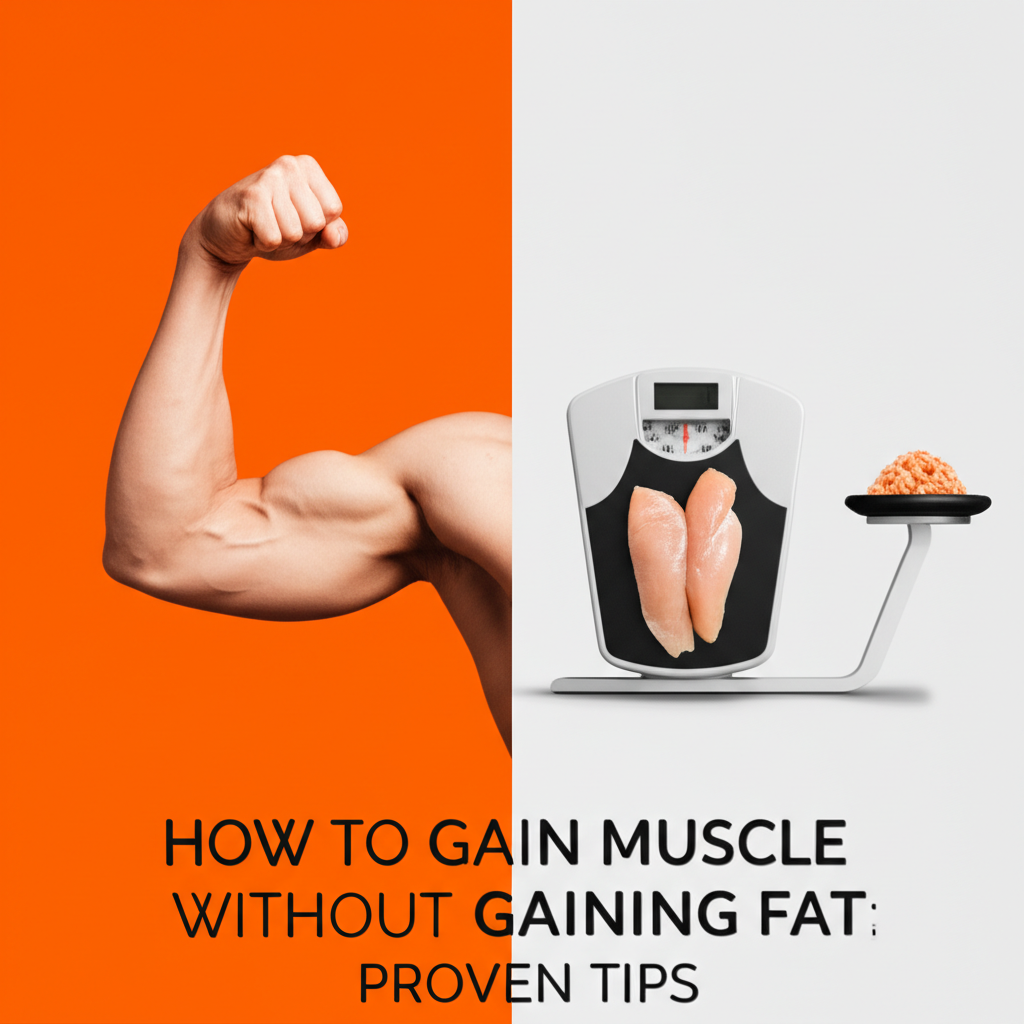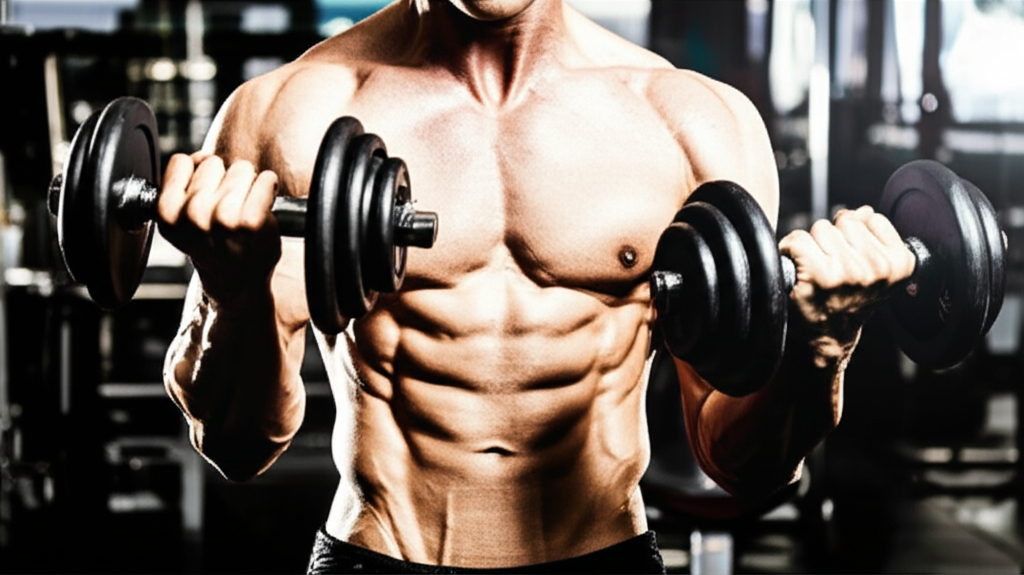How to Gain Muscle Without Gaining Fat: Proven Tips

Build lean muscle and stay lean with these proven tips on how to gain muscle without gaining fat. This guide simplifies the process, focusing on nutrition, training, and recovery for optimal results.
Key Takeaways

- Prioritize protein intake for muscle repair and growth.
- Implement progressive overload in your strength training.
- Control calorie intake to create a slight surplus or maintenance.
- Focus on whole, unprocessed foods for nutrients.
- Ensure adequate sleep for recovery and hormone balance.
- Choose effective exercises targeting major muscle groups.
Gaining Muscle Without Excess Fat: Your Beginner’s Roadmap
So, you want to build a stronger, more toned physique? It’s a common goal, but the idea of gaining muscle often comes with the worry of also gaining unwanted fat. This can be confusing, especially for beginners. Many people think they have to choose between bulking up and staying lean, but that’s simply not true. With the right approach, you can achieve significant muscle growth while minimizing fat accumulation. This guide will break down exactly how to gain muscle without gaining fat, in a way that’s easy to understand and follow. Let’s get started on your journey to a leaner, stronger you.
Understanding the Energy Balance: The Foundation of Lean Muscle Gain
At its core, gaining muscle without gaining too much fat is about managing your energy balance. Energy balance refers to the relationship between the calories you consume (energy in) and the calories you expend (energy out). To build muscle, your body needs a slight energy surplus, meaning you consume slightly more calories than you burn. However, a large surplus can lead to significant fat gain.
The key is to keep this surplus modest, around 250-500 calories above your maintenance level. This provides enough energy for muscle protein synthesis (the process of building new muscle) without overwhelming your body’s ability to store excess energy as fat. Think of it like building a house: you need enough materials (calories) to build the structure (muscle), but too many excess materials will just clutter the site (become fat).
Understanding your Total Daily Energy Expenditure (TDEE) is crucial. This is the total number of calories you burn in a day, including your Basal Metabolic Rate (BMR), the thermic effect of food, and activity levels. Numerous online calculators can help you estimate your TDEE, which serves as your starting point for determining your calorie intake. For instance, if your TDEE is 2,500 calories, aiming for 2,750-3,000 calories might be a good starting point for lean muscle gain.
The U.S. Department of Agriculture (USDA) provides helpful resources on understanding calorie needs based on age, sex, and activity level, which can be a valuable reference point for anyone looking to manage their dietary intake.
Fueling Your Gains: The Role of Macronutrients
Once you have your calorie target, it’s time to focus on what you eat – your macronutrients: protein, carbohydrates, and fats. Getting the right balance is essential for muscle growth and energy levels.
Protein: The Building Blocks of Muscle
Protein is king when it comes to muscle building. Your muscles are made of protein, and intense training breaks down muscle fibers. Protein provides the amino acids necessary to repair this damage and build new muscle tissue. Aim for about 1.6 to 2.2 grams of protein per kilogram of body weight per day. For an individual weighing 70 kg (154 lbs), this would be roughly 112 to 154 grams of protein daily.
Excellent sources of protein include lean meats (chicken, turkey, lean beef), fish, eggs, dairy products (Greek yogurt, cottage cheese), legumes (beans, lentils), tofu, and protein powders.
Carbohydrates: Your Primary Energy Source
Carbohydrates are your body’s preferred energy source, fueling your workouts and replenishing glycogen stores in your muscles. Without enough carbs, your body might break down muscle tissue for energy, which is the opposite of what you want. Focus on complex carbohydrates, which are digested slowly and provide sustained energy. Good sources include whole grains (oats, brown rice, quinoa), sweet potatoes, fruits, and vegetables.
A general recommendation is to get about 40-50% of your daily calories from carbohydrates. You might consume more on training days and slightly less on rest days.
Healthy Fats: Hormonal Support and Overall Health
Dietary fats are vital for hormone production, including testosterone, which plays a crucial role in muscle growth. Fats also help with nutrient absorption and provide energy. Aim for about 20-30% of your daily calories from healthy fats. Prioritize unsaturated fats found in avocados, nuts, seeds, olive oil, and fatty fish like salmon.
Macronutrient Breakdown Example
Here’s a sample macronutrient breakdown for someone aiming for 2,500 calories per day, with a focus on lean muscle gain. These are general guidelines and can be adjusted based on individual response and preferences.
| Macronutrient | Percentage of Calories | Grams per Day | Example Food Sources |
|---|---|---|---|
| Protein | 30% | 188g (approx. 1.6-2.2g/kg for a 85kg person) | Chicken breast, fish, eggs, Greek yogurt, beans |
| Carbohydrates | 45% | 281g | Oats, brown rice, sweet potatoes, fruits, vegetables |
| Fats | 25% | 69g | Avocado, nuts, seeds, olive oil, fatty fish |
Remember that consistency is key. Eating a balanced diet every day will yield better results than sporadic healthy eating.
The Power of Progressive Overload: Stimulating Muscle Growth
Simply lifting weights isn’t enough to build muscle. To force your muscles to adapt and grow, you need to consistently challenge them. This is the principle of progressive overload. It means gradually increasing the stress placed on your muscles over time. This can be achieved in several ways:
- Increasing the weight: The most common method is to lift heavier weights. When you can comfortably complete your target number of repetitions with good form, it’s time to increase the load.
- Increasing repetitions:
